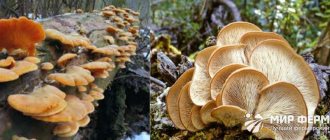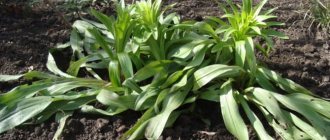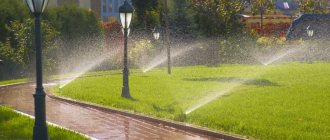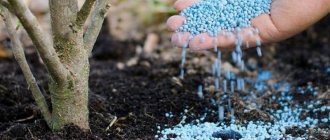The density and freshness of lawn grass directly depends on its saturation with nutrients. The grass cover especially needs feeding in the spring, since the lawn is depleted and weakened after winter. Beginning gardeners often ask questions about how to fertilize the lawn in the spring and how to choose the right fertilizer. Let's try to figure this out.
Fertilizing the lawn in spring
Fertilizer composition
When choosing a fertilizer, you must carefully study its composition. Lawn fertilizers in spring should contain all the necessary substances that plants need during this period:
- Nitrogen. Nitrogen fertilizers for the lawn not only accelerate the growth of grass, but also saturate it with a bright green color. Thanks to nitrogen, the grass cover is renewed faster, the root system of plants is strengthened and the density of the grass increases.
- Phosphorus. Fertilizers containing phosphorus are recommended to be used as spring feeding. Phosphorus promotes earlier appearance of lawn grass, its strengthening and strength. By accelerating the absorption of nutrients from the soil, phosphorus actively improves the health of grass roots, making the root system more branched. Phosphorus fertilizing is recommended to be applied in early spring, even before germination.
- Potassium. Potassium fertilizers can increase the resistance of plants to various diseases. Potassium must be added to the soil along with phosphorus. This significantly increases the efficiency of fertilizing.
Liquid fertilizer sprayer
It is quite difficult to calculate the effective ratio of microelements in fertilizing, and an incorrectly selected composition can cause serious damage to lawn grass. Experts recommend using fertilizers that are designed for a specific season. Lawn care after winter may include the following comprehensive products:
- “Fertika” helps to activate grass growth, increases the density and disease resistance of the cover. Optimal fertilizing of the lawn in the spring.
- "Bona Forte" is an active complex product that is effectively used in the spring immediately after the winter cold and melting snow. It contains all the essential nutrients that the grass needs during the period of intensive growth.
- "Azafoska" is used to care for lawns that grow on clay and sandy soils. It is this composition of the soil cover that allows fertilizing to effectively influence the grass, increasing its growth and development.
- "Ammophos" is rich in phosphorus and potassium. Spring fertilizing not only promotes healthy plants, but also effectively fights pests.
Features of summer feeding
In summer, grass grows quickly under the influence of sunlight, which consumes useful substances. Therefore, during this period, their deficiency in the soil often occurs. As a result, plant lethargy and color change are observed. To restore the necessary balance, many different feedings are required. A good option for filling the soil with all the necessary elements is complex mineral fertilizers. Nitroammophoska is considered the most effective. It promotes the active development of green mass of plants and accelerates the development of the root system, which is especially important when planting young grass. Fertilizing the lawn in summer with nitroammophos is carried out in June or early July.
Experts recommend summer feeding of the lawn the day after cutting the grass.
In early summer, urea or ammonium sulfate is used to improve the color of the grass. Such substances activate the growth of lawn plants. Fertilizers are added at a rate of 20 grams per m². Soil that is highly saturated with moisture requires more nutrients. In August, fertilizing with nitrogen fertilizers stops. During this period, phosphorus and potassium supplements are required. Superphosphate is especially popular. It is evenly distributed throughout the green area. 60 g of this fertilizer is required per 1 m². Potassium sulfate also enriches the soil well at the end of summer. It is used at a rate of 30 g per m².
Lawn feeding methods
Depending on the consistency of the selected inorganic fertilizer and the recommended application of it to the soil, there are several forms of fertilizing the lawn:
- Solution. You can purchase ready-made fertilizers in the form of a solution, or dilute the fertilizer with water. The solution must be poured into a watering can and sprinkled throughout the lawn. If the area is large, then a special sprinkler should be used.
We apply fertilizers for the lawn
- Granules. Dry granules should be scattered evenly over the area, trying to get them under the roots of the grass. It is important to remember that when applying fertilizer, the grass should be slightly moistened and the soil saturated with moisture. If rain is not expected, it is recommended to moisten the soil with water yourself.
- Powder. Fertilizers in powder form can be used either dry or dissolved in a water base. It is necessary to sprinkle the powder on the lawn only when there are no gusts of wind, otherwise it will be sprayed unevenly over the area.
How to fertilize?
There are several ways to apply fertilizers. Can be used:
- Manual method. An option that is available to any gardener. Use your hands to distribute the preparation evenly lengthwise and crosswise and pour over it. Gloves must be used to keep your hands protected . Granules containing a high concentration of elements burn the skin;
- Liquid fertilizers. The product must be diluted with water and watered on the lawn in the area. For convenience when watering, you can use a special spray bottle; with it, the process of watering the roots will go faster;
- Seeders. A mechanical option for distributing the active product on the lawn. It is recommended to use for processing large clearings. The seeders are adjusted in a special way so that the supply of the plant additive is uniform and in the required concentration.
The amount of active preparations needed for a lawn is written in the instructions for use for the fertilizer. It is difficult to apply an even portion, but gardeners' advice on the use and distribution of complex fertilizers and winter mineral fertilizers will help. These tips allow you to correctly calculate the consumption of nitrogen and other fertilizers.
Fertilizer application rates
Regular fertilizing not only guarantees the decorative appearance of the lawn, but also prevents the development of various grass diseases. Proper application of fertilizers can accelerate grass growth and improve the quality of lawn coverage.
Nitrogen-containing substances are recommended to be used in the spring immediately after mowing the grass. Depending on weather and soil conditions, nitrogen must be applied at the rate of 2-17 g per square meter. m. In spring, it is recommended to fertilize with nitrogen at least twice. As nitrogen-containing fertilizers, it is necessary to use substances such as:
- urea;
- ammonium nitrate;
- ammonium sulfate.
With the onset of summer, it is recommended to feed the lawn with urea (urea). It will increase the drought resistance of lawn grass and strengthen the root system of plants.
Fertilizers containing phosphorus should be used at the rate of 5-7 g per square meter. m. This amount should be calculated twice and cover the entire growing season of the plants.
Potash fertilizers should be applied 2-3 times during the spring season. For the first time, fertilizing should be done immediately after germination.
Organic fertilizers are also indispensable in spring :
- bird droppings;
- peat;
- horse dung.
It is recommended to dissolve horse manure and bird droppings in water at a rate of 1:15. The resulting solution should be placed in a dark, warm place and left to sour for 5-7 days. When it rains, you need to fertilize the lawn grass generously with the prepared solution.
Peat should be spread over the grass in early spring, immediately after the snow cover melts. It heals the soil and improves its structure.
By mulching your lawn area with grass clippings, you can also further enrich the soil with organic matter. It should be remembered that the layer of mulch should not be too dense, as this will prevent sunlight from reaching the lawn grass.
Manual fertilizer dispenser
Why is it important to fertilize your lawn on time and correctly?
Periodic and correct application of fertilizer for a grass lawn is an important element of lawn care. Contrary to the erroneous opinion of some amateur gardeners, even constant mowing and proper watering cannot ensure normal and healthy grass growth, since over time the soil weakens due to leaching of useful minerals, which inevitably leads to loss of bright color, slower growth of grass and gradual its absorption by more “tenacious” weeds.
Therefore, in order to sow lawn grass and grow a healthy and rich lawn, experienced gardeners advise applying fertilizers all year round, starting in early spring and ending with the first autumn or winter frosts. Fertilizing should be carried out in doses, observing proportions and taking into account other factors that contribute to the growth and year-round development of meadow grass, namely:
- type and composition of soil;
- climatic conditions of the region;
- the type of grass and flowers that make up the lawn;
During the dry season, before applying any fertilizers, whether mineral or organic, the soil should be watered generously. If there has been no precipitation for more than a month, it is better to refuse feeding. Constant watering is also necessary after fertilizing; it is especially important to do this in the first 48 hours after fertilizing. Before you buy fertilizers and start feeding your grass, you need to understand what components it needs and what benefits they can bring.
Useful tips
Timely application of fertilizer to the lawn in the spring will allow the plants to be not only healthy, but also beautiful. When feeding lawn grass, you need to follow simple recommendations:
- It is recommended to apply fertilizer before rain. This will allow microelements to be absorbed into the soil faster and protect the plant from oversaturation with nutrients. If the spring is dry and the hot weather does not stop, then you need to wait to use fertilizing.
- Fertilizing should be evenly distributed throughout the entire area. Large accumulations of it on a certain area of the lawn are not allowed: a yellow spot or burn may form.
- It is recommended to feed the lawn early in the morning or late in the evening. This will help protect the cover from direct sunlight, which dries out the fertilizer, preventing it from penetrating into the soil.
- It is necessary to apply fertilizing using special gloves. It is recommended not to leave large areas of skin exposed, cover your hair with a scarf, and wear glasses.
- When applying inorganic fertilizers and after completing the fertilizing process, children and animals should not be allowed to come into contact with the treated area. The entry of trace element particles into the body can lead to serious poisoning.
Intensive mowing, mechanical stress and sudden temperature changes can negatively affect the condition of lawn grass. It is necessary to care for plants both in the spring, when they are weakened after wintering and need active restoration, and during the summer, when high temperatures and lack of moisture can negatively affect the appearance of the lawn.
With the right choice of fertilizer and fertilizing your lawn in the spring, it will delight you with its well-groomed appearance all summer long!
DIY lawn fertilizers
How to feed the lawn, if you do not want to use only mineral mixtures, you can prepare fertilizer for lawn grass yourself.
For this you will need:
- manure;
- chicken droppings;
- peat;
- river silt
There are two ways to prepare fertilizer - composting and solution.
Compost
To do this, you need to equip a compost pit or put the components in a container:
- priming;
- manure;
- food cleaning;
- weeds.
Sequencing:
- layer the components;
- you can add a reaction accelerator - Baikal;
- leave to ripen.
Compost preparation time is 9 – 12 months . During the ripening process, the temperature in the pit rises to 70 degrees . In this case, all pathogenic microflora and parasite larvae die. Good compost should smell like earth.
First-class compost always smells pleasantly like earth.
The substance is used to improve the composition of the soil. In the spring, before germination, compost is spread on the site.
Mullein solution
Manure in its pure form can cause burns, so to fertilize lawn grass you need to prepare a solution:
- Take ¼ of manure or droppings per bucket of water .
- Add water and stir.
- Leave to infuse for 4-5 days .
- Next, dilute - a bucket of infusion with 4 buckets of water .
- You can water the plants
The disadvantage of the solution is that it does not have phosphorus. But there is a lot of nitrogen and potassium. Mullein solution is suitable for spring application without additional additives. In the fall, you can use unrotted manure by scattering it throughout the site. Over the winter, excess ammonia will evaporate, and in the spring the greenery will be nourished.
Complex mixtures
How to fertilize the lawn in the fall so that it lasts until spring? You can prepare organic fertilizer for your lawn. If there is a body of water nearby, then collecting a couple of buckets of silt (sapropel) will not be difficult. It is rich in nitrogen, potassium and phosphorus. That's all the plants need. It must be ventilated before use. For 1 square meter you need 4 - 8 kg of sludge - as much as you can get.
Sapropel is rich in essential nutrients.
The effectiveness of sapropel is 3 years after application, so it is a very beneficial fertilizer for lawn grass. It does not contain weed seeds or harmful compounds. To be sure, it is recommended to prepare the sludge in the summer, leave it in the air, and use it to feed the grass on the site in the spring.
The solution is prepared as follows:
- Mix sludge with water in a ratio of 1/10 .
- Leave for 5 days .
- Stir and you can water the soil.
On acidic soils, you can add lime to the solution so as not to further acidify the soil. On neutral or alkaline soils, silt-based lawn fertilizers are ideal.











